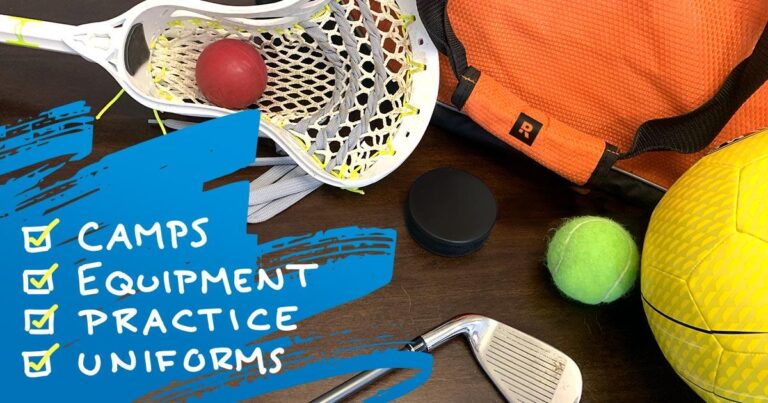A recent survey reveals that American parents are spending an average of $3,000 each year on their children’s participation in sports, driven by aspirations for college scholarships and professional careers. As youth sports become an increasingly expensive investment, families are navigating rising costs in equipment, training, and travel, highlighting the growing financial stakes of athletic development. This trend underscores the pressures faced by parents aiming to support their children’s athletic dreams in a competitive landscape.
Parents Prioritize Long-Term Athletic Investment Despite Financial Strain
Despite tightening budgets, many parents continue to invest heavily in their children’s athletic pursuits, driven by aspirations of scholarships and professional careers. The survey highlights that families are willing to stretch their finances, prioritizing expenses on specialized coaching, equipment, and travel to tournaments over other discretionary spending. This commitment reflects a widespread belief that early and sustained investment in sports can open doors to higher education opportunities and potential long-term financial benefits.
Outlined below are the key areas where parents allocate their sports budgets, emphasizing the strategic nature of these investments:
- Private coaching sessions to refine skills and gain competitive edges.
- Travel and tournament fees necessary for exposure to college scouts and recruitment events.
- Specialized gear and training equipment which often require costly upgrades season after season.
| Category | Average Annual Spend | Percentage of Total Spend |
|---|---|---|
| Coaching & Training | $1,200 | 40% |
| Travel & Tournaments | $1,000 | 33% |
| Equipment & Apparel | $600 | 20% |
| Miscellaneous Fees | $200 | 7% |
Rising Costs of Youth Sports Fuel Concerns Over Accessibility and Equity
The financial demands on families to keep up in the competitive youth sports world have escalated dramatically, with many parents reporting annual expenses nearing $3,000 per child. This surge is largely driven by enrollment fees, specialized coaching, travel costs for tournaments, and expensive gear‚ÄĒall perceived as necessary investments to secure athletic scholarships and professional opportunities. For lower-income families, these escalating costs often create barriers, limiting access and fostering inequality in youth sports participation.
Experts warn that this trend towards high-cost sports ecosystems may sideline talented children who lack financial resources, concentrating opportunities among wealthier families. The following breakdown highlights where typical expenses accumulate:
- Club Fees: $1,200 – $1,500
- Travel & Accommodation: $700 – $900
- Equipment & Apparel: $400 – $600
- Specialized Training: $300 – $500
| Expense Category | Average Annual Cost | Impact on Accessibility |
|---|---|---|
| Club Fees | $1,350 | High – Excludes low-income families |
| Travel & Accommodation | $800 | Moderate – Limits participation regionally |
| Equipment & Apparel | $500 | Moderate – Essential for competition |
| Specialized Training | $400 | High – Creates skill gaps |
Experts Advise Balancing Enthusiasm With Realistic Expectations for Child Athletes
While enthusiasm for children’s sports can be a wonderful motivator, experts caution parents to foster balanced perspectives. Overinvestment of time and money often stems from hopeful dreams of scholarships or professional careers, but statistically, only a small fraction of young athletes reach these milestones. Specialists recommend emphasizing enjoyment, skill development, and physical fitness, alongside healthy competition, to cultivate long-term passion.
Key advice for parents includes:
- Encouraging children to explore multiple sports to find genuine interest.
- Setting realistic goals aligned with the child’s abilities and interests.
- Maintaining open communication about the pressures and expectations involved.
- Prioritizing emotional well-being over excessive specialization at an early age.
| Factor | Recommended Approach |
|---|---|
| Training Hours | Balanced schedule with ample rest |
| Financial Investment | Set budget limits, avoid overextension |
| Emotional Support | Consistent encouragement, not pressured demands |
Strategies for Families to Manage Expenses While Supporting Sports Aspirations
Balancing the financial demands of youth sports with family budgets requires foresight and strategic planning. Many parents are adopting cost-saving measures without sacrificing their children’s athletic development. These include prioritizing local teams over expensive travel squads, seeking sponsorship or scholarship opportunities, and investing in multi-sport participation to maximize value from shared equipment and training costs. Additionally, families are leveraging community resources such as public fields and volunteer coaching to reduce expenses.
Effective approaches include:
- Pooling resources with other families to share equipment and travel expenses
- Negotiating payment plans with sports organizations
- Utilizing secondhand gear markets and online exchanges
- Encouraging skill development at home through digital tutorials
| Expense Category | Average Annual Cost | Smart Savings Tip |
|---|---|---|
| Equipment | $800 | Buy used or multi-purpose gear |
| Travel | $900 | Opt for local tournaments |
| Training & Camps | $1,000 | Attend community clinics |
| Uniforms | $300 | Rent or swap with peers |
Key Takeaways
As youth sports continue to command considerable financial investment from families nationwide, the recent USA Today survey highlights the growing pressure parents face to prepare their children for potential collegiate and professional opportunities. With annual expenditures averaging around $3,000, the commitment extends beyond the fields and courts, reflecting broader economic and societal trends shaping youth athletics. Moving forward, the conversation around accessibility, affordability, and the long-term impacts of these costs remains critical for stakeholders aiming to balance opportunity with equity in the world of youth sports.




